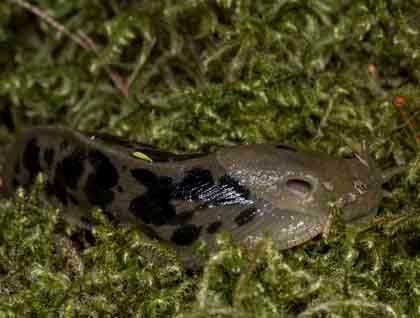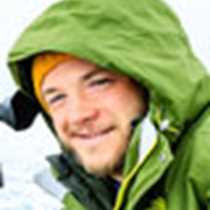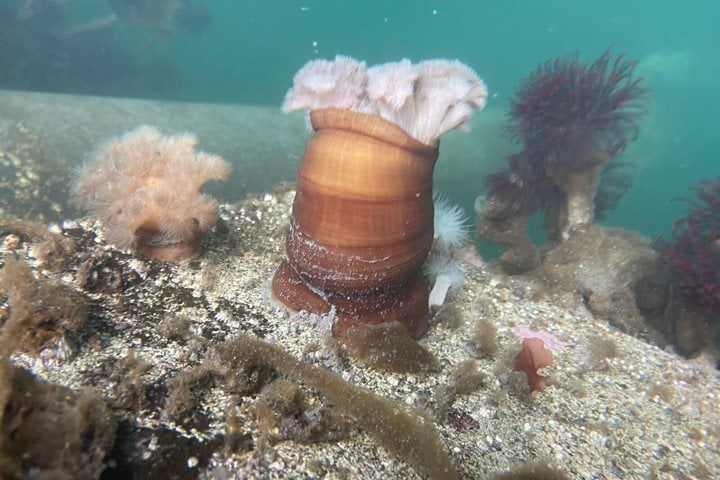Sometimes getting used to the time differences between our homes and the destinations we travel to can be a blessing. This morning those of us who got up early because we are not used to the time difference found ourselves sipping coffee and watching scores of seabirds as we sailed to our first destination of the day, George Island. Common murres and marbled murelets dove to safety as National Geographic Sea Lion cruised passed them. More tolerant than the seabirds, a playful sea otter calmly groomed his fur and simply watched as we sailed by. We are also treated to our first day of true Southeast Alaskan weather. The clouds shrouded the mountains along the shore and those who ventured to the outside deck soon came inside announcing that “it’s a little chilly out there this morning.”
George Island gives us an opportunity to experience some of Alaska’s historic past. It was the site of a small garrison of about 40 soldiers during World War II. As we leave the beach the first evidence of its military inhabitants makes itself known and we pass derelict rusting and decaying remnants of the small group of men who were stationed here. Then we venture onto a fairyland forest filled with rich mosses, lichens and banana slugs. At first many of the guests are unsure of the excitement the guides have about these slime covered little animals, but as the natural history of the animals is explained, we become banana slug fans. A little more than halfway to the end of the trail we encounter the first signs of bears in Alaska and you can feel the excitement building. How quickly we forget about our little slugs. We will not encounter any bears today, but the evidence of their presence is indisputable, and simply knowing we walk where bears have gone before us is enough to make our hearts beat faster. We reach our destination, a cannon left behind by the military. But as the tiny little slug took a back seat to the idea of bears, the cannon is forgotten as someone pointed out the group of killer whales traveling the channel in the ocean below our overlook. Sighs and gasps are heard as a whale surfaces. It is nice to see everyone so excited even if they are too far to photograph.
After lunch we set out on our inflatable boats for a cruise around the Inian Islands. It is these islands that mark the northern most point where the open ocean empties into the Inside Passage. With the amount of water needing to flow in and out of the passage with every tide, the upwelling fills it with nutrients, which makes this area an ideal place to see a host of marine animals.
During the day the weather had cleared and in full sunshine we came across our first sighting, a humpback whale. Our inflatable boats quickly speed towards the feeding leviathan, but the whale was intent on feeding and was heading in the wrong direction for us to follow. We came about, and as we headed along the islands we see a raft of sea otters, and these playful marine mammals were much more willing to allow us closer views. The otters were amongst the fronds of kelp were they were protected from the constant surge of ocean water around them. We could spend all day watching the antics of our little friends as they groomed, watched us, and groomed again. We linger as long as we dare, but there is so much more to be seen. As we motor along the coast we noticed an ever loudening sound of barking as we approach a group of Stellar sea lions hauled out on a rocky outcropping. Non-stop arguments between sea lions jousting for the best spot make for an exciting theater of wildlife behavior as we pondered the meaning of their quarreling. In the water, another group reminds us of synchronized swimmers as flippers and heads show themselves in choreographed play. Watching them is an exercise in joy.
Time moves quickly and soon it was time to head back to our ship. Along the way gulls, cormorants, and guillemots set to their task of feeding in the rich waters of the Inian Islands, another reminder of the rich diversity of life beneath the ocean’s wave.









